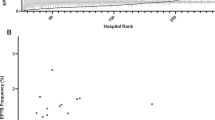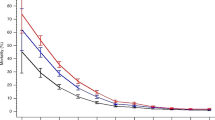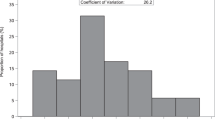Abstract
Objective:
To explore population characteristics, organization of health services and comparability of available information for very low birth weight or very preterm neonates born before 32 weeks’ gestation in 11 high-income countries contributing data to the International Network for Evaluating Outcomes of Neonates (iNeo).
Study Design:
We obtained population characteristics from public domain sources, conducted a survey of organization of maternal and neonatal health services and evaluated the comparability of data contributed to the iNeo collaboration from Australia, Canada, Finland, Israel, Italy, Japan, New Zealand, Spain, Sweden, Switzerland and UK.
Results:
All countries have nationally funded maternal/neonatal health care with >90% of women receiving prenatal care. Preterm birth rate, maternal age, and neonatal and infant mortality rates were relatively similar across countries. Most (50 to >95%) between-hospital transports of neonates born at non-tertiary units were conducted by designated transport teams; 72% (8/11 countries) had designated transfer and 63% (7/11 countries) mandate the presence of a physician. The capacity of ‘step-down’ units varied between countries, with capacity for respiratory care available in <10% to >75% of units. Heterogeneity in data collection processes for benchmarking and quality improvement activities were identified.
Conclusions:
Comparability of healthcare outcomes for very preterm low birth weight neonates between countries requires an evaluation of differences in population coverage, healthcare services and meta-data.
This is a preview of subscription content, access via your institution
Access options
Subscribe to this journal
Receive 12 print issues and online access
$259.00 per year
only $21.58 per issue
Buy this article
- Purchase on Springer Link
- Instant access to full article PDF
Prices may be subject to local taxes which are calculated during checkout
Similar content being viewed by others
References
Liu L, Oza S, Hogan D, Perin J, Rudan I, Lawn JE et al. Global, regional, and national causes of child mortality in 2000-2013, with projections to inform post-2015 priorities: an updated systematic analysis. Lancet 2015; 385: 430–440.
Horbar JD, Badger GJ, Carpenter JH, Fanaroff AA, Kilpatrick S, LaCorte M et al. Trends in mortality and morbidity for very low birth weight infants, 1991-1999. Pediatrics 2002; 110: 143–151.
Shah PS, Sankaran K, Aziz K, Allen AC, Seshia M, Ohlsson A et al. Outcomes of preterm infants <29 weeks gestation over 10-year period in Canada: a cause for concern? J Perinatol 2012; 32: 132–138.
Fanaroff AA, Stoll BJ, Wright LL, Carlo WA, Ehrenkranz RA, Stark AR et al. Trends in neonatal morbidity and mortality for very low birthweight infants. Am J Obstet Gynecol 2007; 196: 147–e1.
Stoll BJ, Hansen NI, Bell EF, Shankaran S, Laptook AR, Walsh MC et al. Neonatal outcomes of extremely preterm infants from the NICHD Neonatal Research Network. Pediatrics 2010; 126: 443–456.
McCormick MC, Shapiro S, Starfield BH . The regionalization of perinatal services: summary of the evaluation of a national demonstration program. JAMA 1985; 253: 799–804.
Van Reempts P, Gortner L, Milligan D, Cuttini M, Petrou S, Agostino R et al. Characteristics of neonatal units that care for very preterm infants in Europe: results from the MOSAIC study. Pediatrics 2007; 120: e815–e825.
Field D, Bajuk B, Manktelow BN, Vincent T, Dorling J, Tarnow-Mordi W et al. Geographically based investigation of the influence of very-preterm births on routine mortality statistics from the UK and Australia. Arch Dis Child Fetal Neonatal Ed 2008; 93: F212–F216.
Korvenranta E, Linna M, Rautava L, Andersson S, Gissler M, Hallman M et al. Hospital costs and quality of life during 4 years after very preterm birth. Arch Pediatr Adolesc Med 2010; 164: 657–663.
Zeitlin J, Papiernik E, Breart G EUROPET Group. Regionalization of perinatal care in Europe. Semin Neonatol 2004; 9: 99–110.
Papiernik E, Zeitlin J, Milligan DWA, Carrapato MRG, Van Reempts P, Gadzinowski J et al. Variations in the organization of obstetric and neonatal intensive care in Europe. Prenat Neonatal Med 1999; 4: 73–87.
Evans N, Hutchinson J, Simpson JM, Donoghue D, Darlow B, Henderson-Smart D . Prenatal predictors of mortality in very preterm infants cared for in the Australian and New Zealand Neonatal Network. Arch Dis Child Fetal Neonatal Ed 2007; 92: F34–F40.
Pollack LD, Ratner IM, Lund GC . United States neonatology practice survey: personnel, practice, hospital, and neonatal intensive care unit characteristics. Pediatrics 1998; 101: 398–405.
Shah PS, Lee SK, Lui K, Sjors G, Mori R, Reichman B et al. The International Network for Evaluating Outcomes of very low birth weight, very preterm neonates (iNeo): a protocol for collaborative comparisons of international health services for quality improvement in neonatal care. BMC Pediatr 2014; 14: 110.
Shah PS, Lui K, Sjörs G, Mirea L, Reichman B, Adams M et al. Neonatal outcomes of very low birth weight and very preterm neonates: an international comparison. J Pediatr 2016; 177: 144–152.
The World BankWorld Bank Open Data. Available from: http://data.worldbank.org/topic/health?view=chart. Accessed on 26 July 2016.
Central Intelligence AgencyThe World Factbook 2013-2014. Available from: https://www.cia.gov/library/publications/resources/the-world-factbook/. Accessed on 26 July 2016..
AAP Committee on Fetus and Newborn and ACOG Committee on Obstetric Practice Guidelnes for Perinatal Care. 7th edn. American Academy of Pediatrics: Washington, DC, 2012.
Lui K, Abdel-Latif ME, Allgood CL, Bajuk B, Oei J, Berry A et al. Improved outcomes of extremely premature outborn infants: effects of strategic changes in perinatal and retrieval services. Pediatrics 2006; 118: 2076–2083.
Chung MY, Fang PC, Chung CH, Chen CC, Hwang KP, Chen FS . Comparison of neonatal outcome for inborn and outborn very low-birthweight preterm infants. Pediatrics Int 2009; 51: 233–236.
Sankaran K, Chien LY, Walker R, Seshia M, Ohlsson A, Lee SK . Variations in mortality rates among Canadian neonatal intensive care units. CMAJ 2002; 166: 173–178.
Hossain S, Shah PS, Ye XY, Darlow BA, Lee SK, Lui K . Outcome comparison of very preterm infants cared for in the neonatal intensive care units in Australia and New Zealand and in Canada. J Paediatr Child Health 2015; 51: 881–888.
Helmerhorst FM, Perquin DA, Donker D, Keirse MJ . Perinatal outcome of singletons and twins after assisted conception: a systematic review of controlled studies. BMJ 2004; 328: 261.
McDonald S, Murphy K, Beyene J, Ohlsson A . Perinatal outcomes of in vitro fertilization twins: a systematic review and meta-analyses. Am J Obstet Gynecol 2005; 193: 141–152.
Ryan GL, Sparks AE, Sipe CS, Syrop CH, Dokras A, Van Voorhis BJ . A mandatory single blastocyst transfer policy with educational campaign in a United States IVF program reduces multiple gestation rates without sacrificing pregnancy rates. Fertil Steril 2007; 88: 354–360.
McDonald SD, Han Z, Mulla S, Murphy KE, Beyene J, Ohlsson A . Preterm birth and low birth weight among in vitro fertilization singletons: a systematic review and meta-analyses. Eur J Obstet Gynaecol Reprod Biol 2009; 146: 138–148.
Richardus JH, Graafmans WC, Verloove-Vanhorick SP, Mackenbach JP . The perinatal mortality rate as an indicator of quality of care in international comparisons. Med Care 1998; 36: 54–66.
Deb-Rinker P, Leon JA, Gilbert NL, Rouleau J, Andersen AMN, Bjarnadottir RI et al. Differences in perinatal and infant mortality in high-income countries: artifacts of birth registration or evidence of true differences? BMC Pediatr 2015; 15: 1.
Joseph KS, Liu S, Rouleau J, Lisonkova S, Hutcheon JA, Sauve R et al. Influence of definition based versus pragmatic birth registration on international comparisons of perinatal and infant mortality: population based retrospective study. BMJ 2012 344 e746.
Acknowledgements
We would like to thank Natasha Musrap, PhD, from the Maternal-Infant Care Research Centre at Mount Sinai Hospital for editorial assistance in the preparation of this manuscript. PSS had full access to all the data in the study and takes final responsibility for the decision to submit for publication. We gratefully acknowledge all investigators and contributing NNUs listed in the Supplementary Information. Funding for iNeo has been provided by a Canadian Institutes of Health Research Applied Research Chair (APR-126340) in Reproductive and Child Health Services and Policy Research held by PSS. The Canadian Neonatal Network is funded by financial support from the Canadian Institutes of Health Research and individual participating centers. The Australian and New Zealand Neonatal Network is predominantly funded by membership contributions from participating centers. The Israel Neonatal Network very low birth weight infant database is partially funded by the Israel Center for Disease Control and the Ministry of Health. TIN Toscane online Network is funded by the Tuscany Region. The Neonatal Research Network of Japan is partly funded by a Health Labour Sciences Research Grant from the Ministry of Health, Labour and Welfare of Japan. SEN1500 is supported by funds from the Spanish Neonatal Society. The Swedish Neonatal Quality Register is funded by the Swedish Government (Ministry of Health and Social Affairs) and the body of regional health care providers (County Councils). SwissNeoNet is partially funded by participating units in the form of membership fees. The United Kingdom Neonatal Collaborative receives no core funding.
Author contributions
LEK reviewed the literature, collected and analyzed the data and drafted the initial manuscript. PSS and NM conceptualized the idea, designed the study, supervised data analyses, acquired national population data, revised the initial manuscript and approved the final manuscript. SK, FR, SKL, DB, KL, GS, BR, MA, BAD, MV, LG, LL, LSF and SH conceptualized the idea, designed the study, completed the survey, acquired national population data, revised and approved the final manuscript.
Author information
Authors and Affiliations
Consortia
Corresponding author
Ethics declarations
Competing interests
The authors declare no conflict of interest.
Additional information
Contributing neonatal units
A list of NNUs and site investigators are listed in the Supplementary Information.
Supplementary Information accompanies the paper on the Journal of Perinatology website .
Supplementary information
Rights and permissions
About this article
Cite this article
Kelly, L., Shah, P., Håkansson, S. et al. Perinatal health services organization for preterm births: a multinational comparison. J Perinatol 37, 762–768 (2017). https://doi.org/10.1038/jp.2017.45
Received:
Revised:
Accepted:
Published:
Issue Date:
DOI: https://doi.org/10.1038/jp.2017.45
This article is cited by
-
Team Models in Interfacility Transport-Building and Maintaining Competencies
Current Treatment Options in Pediatrics (2017)



